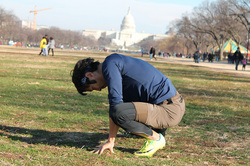- Home
- About Us
- TSPT Academy
- Online Courses
-
Resources
- Newsletter
- Business Minded Sports Physio Podcast
- Day in the Life of a Sports PT
- Residency Corner
-
Special Tests
>
-
Cervical Spine
>
- Alar Ligament Test
- Bakody's Sign
- Cervical Distraction Test
- Cervical Rotation Lateral Flexion Test
- Craniocervical Flexion Test (CCFT)
- Deep Neck Flexor Endurance Test
- Posterior-Anterior Segmental Mobility
- Segmental Mobility
- Sharp-Purser Test
- Spurling's Maneuver
- Transverse Ligament Test
- ULNT - Median
- ULNT - Radial
- ULNT - Ulnar
- Vertebral Artery Test
- Thoracic Spine >
-
Lumbar Spine/Sacroiliac Joint
>
- Active Sit-Up Test
- Alternate Gillet Test
- Crossed Straight Leg Raise Test
- Extensor Endurance Test
- FABER Test
- Fortin's Sign
- Gaenslen Test
- Gillet Test
- Gower's Sign
- Lumbar Quadrant Test
- POSH Test
- Posteroanterior Mobility
- Prone Knee Bend Test
- Prone Instability Test
- Resisted Abduction Test
- Sacral Clearing Test
- Seated Forward Flexion Test
- SIJ Compression/Distraction Test
- Slump Test
- Sphinx Test
- Spine Rotators & Multifidus Test
- Squish Test
- Standing Forward Flexion Test
- Straight Leg Raise Test
- Supine to Long Sit Test
-
Shoulder
>
- Active Compression Test
- Anterior Apprehension
- Biceps Load Test II
- Drop Arm Sign
- External Rotation Lag Sign
- Hawkins-Kennedy Impingement Sign
- Horizontal Adduction Test
- Internal Rotation Lag Sign
- Jobe Test
- Ludington's Test
- Neer Test
- Painful Arc Sign
- Pronated Load Test
- Resisted Supination External Rotation Test
- Speed's Test
- Posterior Apprehension
- Sulcus Sign
- Thoracic Outlet Tests >
- Yergason's Test
- Elbow >
- Wrist/Hand >
- Hip >
- Knee >
- Foot/Ankle >
-
Cervical Spine
>
- I want Financial Freedom
- I want Professional Growth
- I want Clinical Mastery
 Much of the recent research has suggested that it is best to warm-up prior to exercise to decrease risk of injury, deviating from the previously accepted practice of stretching. Mike Reinold's recent post discussed some of the disparities between the more recent and older research on the topic. One of the major factors brought up is that stretching less than 30 seconds is not associated with increased injury risk. In fact, stretching longer than 30 seconds is okay as well if combined with some form of dynamic exercise. The question of "why" arises. As we've discussed before, a stretch only changes tissue length after 30 seconds of static hold. In school, we were taught that when stretching, we should proceed to strengthen in the newly acquired range. This is important so that we can maintain that range and have control over the joint. Without strengthening/neuromuscular training in the new range, the joint loses stability. We really shouldn't be trying to increase muscle length prior to any competition, especially since the muscles/joints are weak at those points. Our theory is that stretching less than 30 seconds or combining stretching with dynamic exercises activates or maintains some neuromuscular tone/reflex that protects the joint in end range by decreasing perceived stiffness. Fatigue has been shown to play a role in stretch reflex inhibition, thus decreasing performance (Ross et al, 2001). Just as concerning, prolonged passive stretches have been shown to an effect on the tendinous tissue, such as stress relaxation and plastic deformation (Avela et al, 2004). By keeping stretches under 30 seconds or adding dynamic exercises, this protective reflex is not lost. Many PT schools teach that ballistic stretching can be hazardous to the tissue, but with these findings, do you think that type of exercise actually does have a role in performance enhancement/injury prevention? References:
Avela J, Finni T, Liikavainio T, Niemelä E, Komi PV. (2004). Neural and mechanical responses of the triceps surae muscle group after 1 h of repeated fast passive stretches. J Appl Physiol. 2004 Jun;96(6):2325-32. Web. 11 Aug 2013. Avela J, Kyröläinen H, Komi PV. (1999). Altered reflex sensitivity after repeated and prolonged passive muscle stretching. J Appl Physiol. 1999 Apr;86(4):1283-91. Web. 11 Aug 2013. Chalmers G. (2004). Re-examination of the possible role of Golgi tendon organ and muscle spindle reflexes in proprioceptive neuromuscular facilitation muscle stretching. Sports Biomech. 2004 Jan;3(1):159-83. Web. 11 Aug 2013. Ross A, Leveritt M, Riek S. (2001). Neural influences on sprint running: training adaptations and acute responses. Sports Med. 2001;31(6):409-25. Web. 11 Aug 2013.
1 Comment
Alex
8/14/2013 02:27:53 am
Informative. Very nice warnings on warming up and why simply stretching is not adequate. This would be particularly beneficial for workers' rehab. Physical Therapists can actually be certified to care for workers' compensation rehabilitation cases. Here, if you have time, check out the CWcHP certification, it brings P.T.'s directly into healthcare. Here's the link
Reply
Leave a Reply. |
Dr. Brian Schwabe's NEW Book in partner with PaleoHacks!
Learn residency-level content on our
Insider Access pages We value quality PT education & CEU's. Click the MedBridge logo below for TSPT savings!Archives
July 2019
Categories
All
|






 RSS Feed
RSS Feed